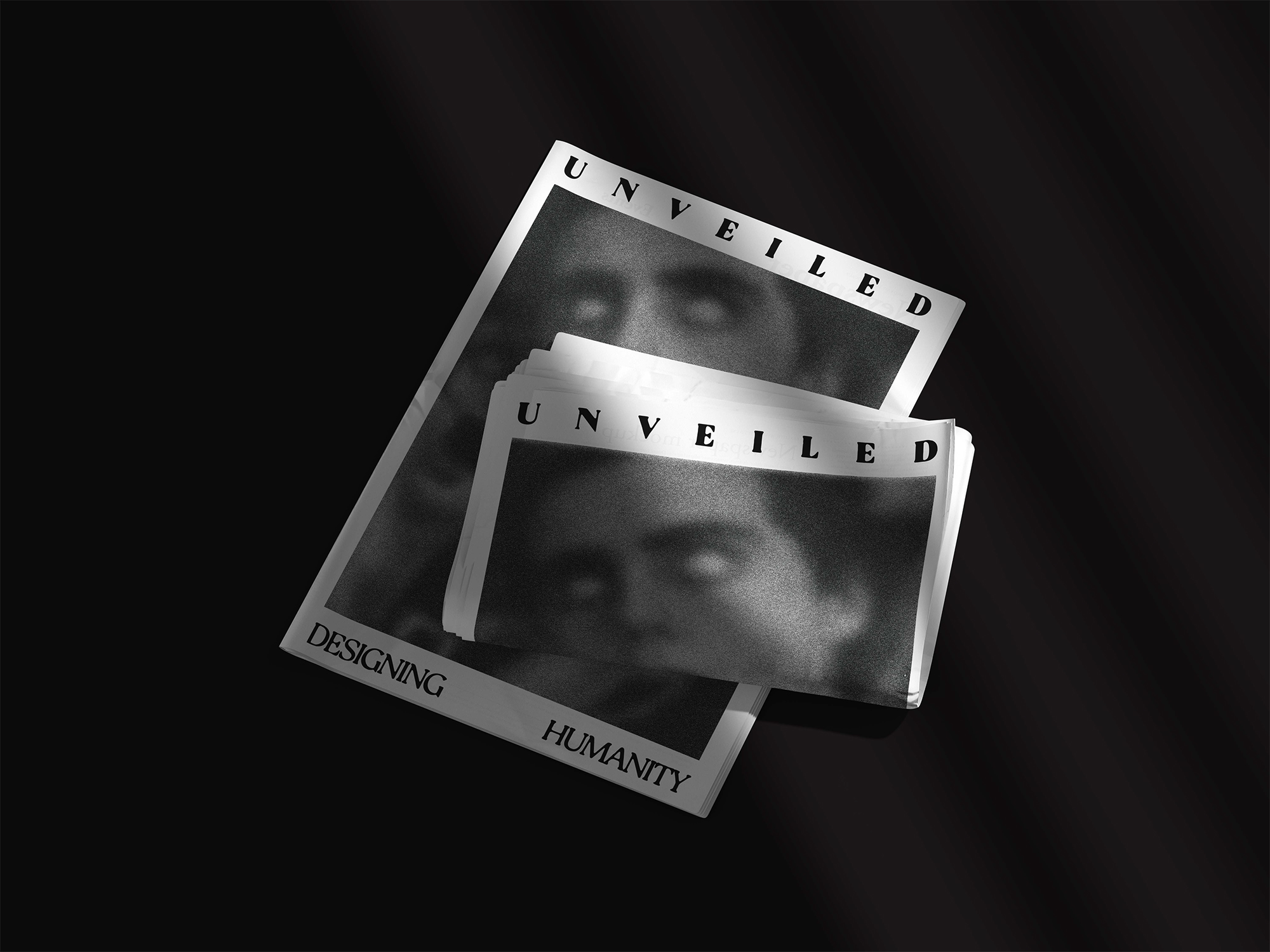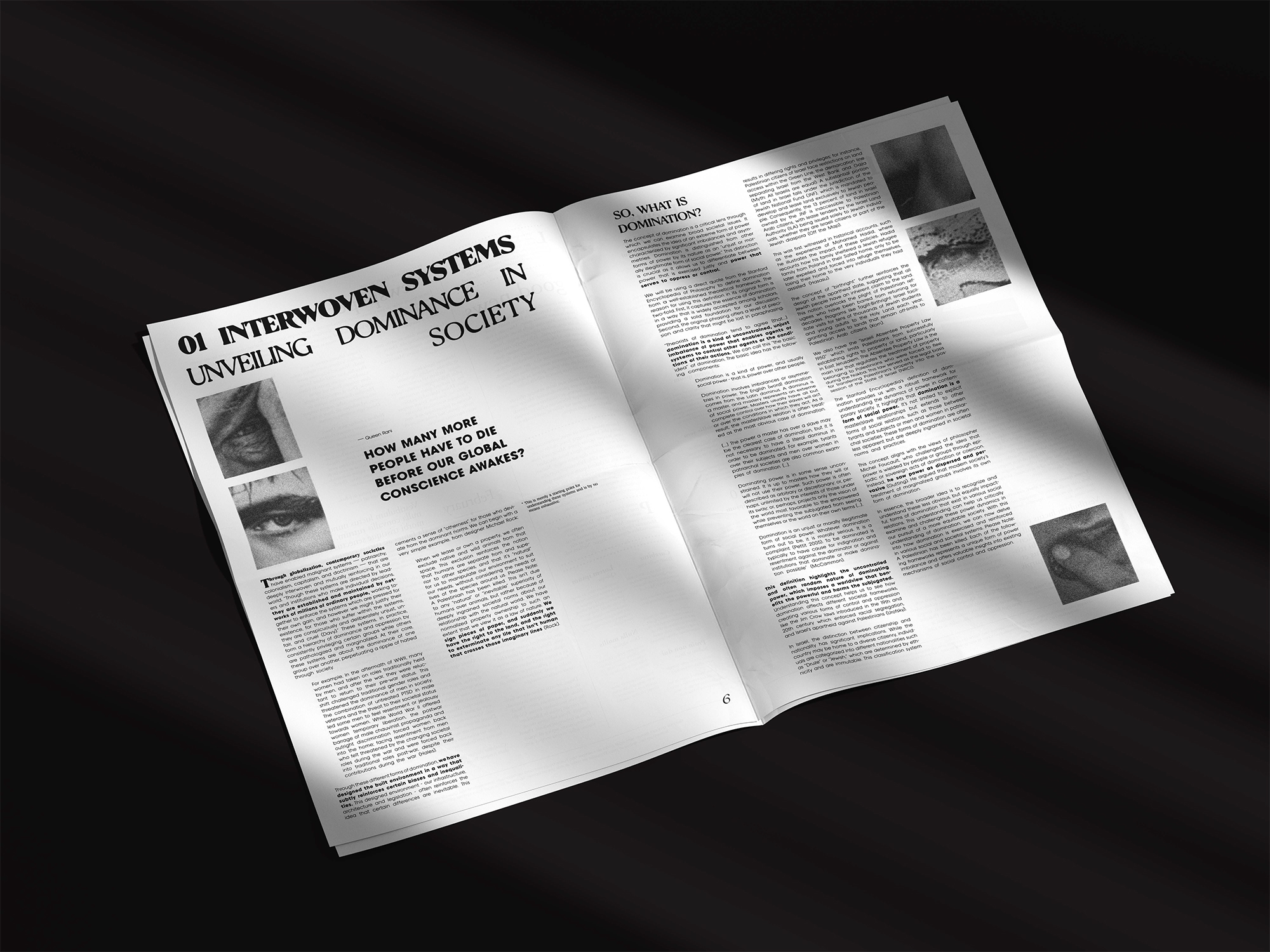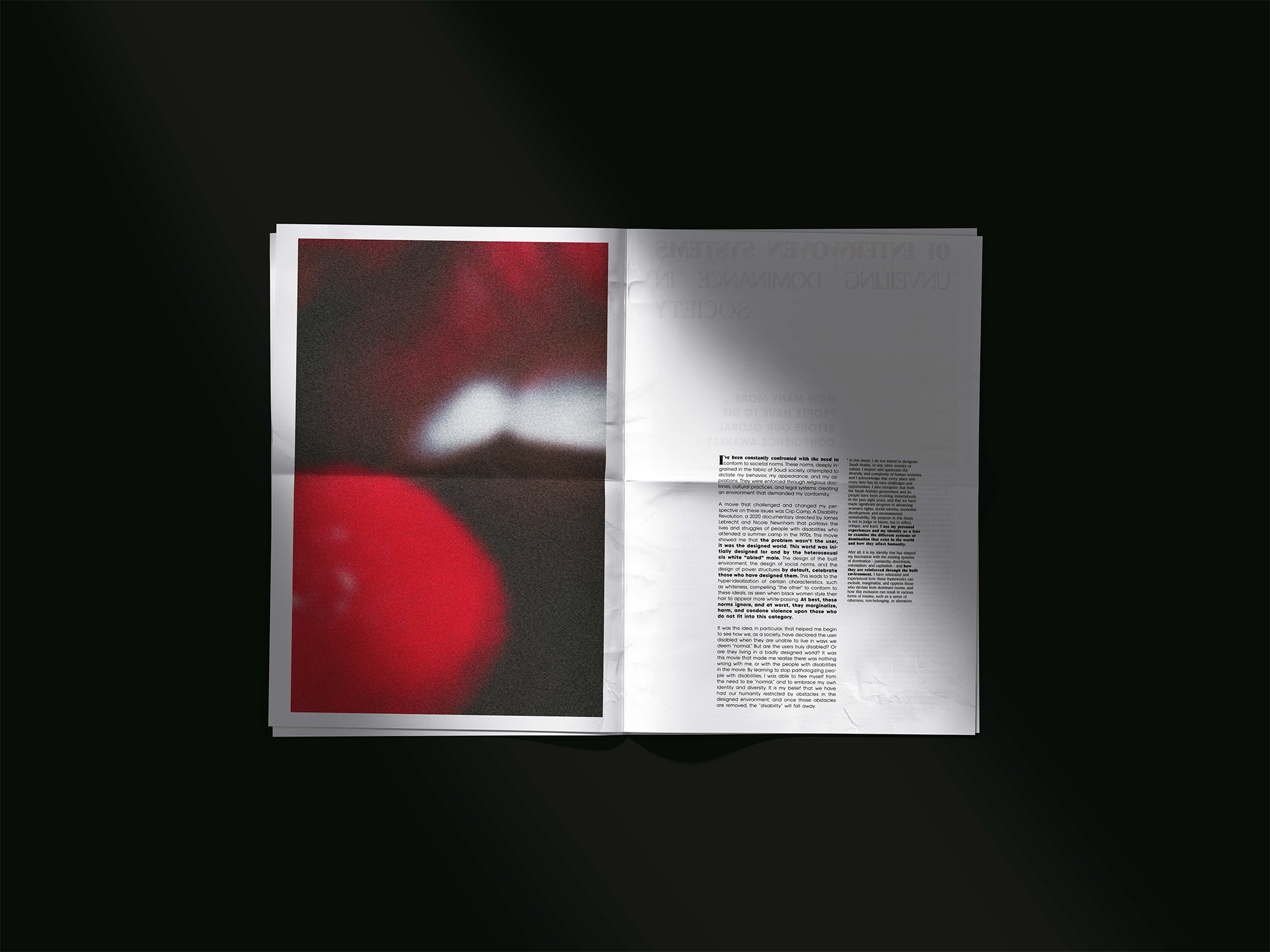Designing Humanity
ALEX SXGE
Design is the process of turning ideas into systems that underpin how we live our lives. It has reinforced systems that
create conflict and tension between the diversity of humans. We live in a culture that hyper-idealizes a characteristic,
privileging the heterosexual cis white “abled” male — and then designs a world to teach us that that is the “norm”. But
it hasn’t stopped there, as time passed, we began to confuse nature and culture at every turn.
The more of a minority you are, the more clearly you will see the systems of domination we experience daily. The more
privileged you are, the harder it will be for you to understand how they oppress others who are subjugated by them. Due
to your privilege, you will never be able to truly experience life the same way as others because you have experienced a
life that was designed for you. You were simply the ideal user.



Designing Humanity Publication
The thesis examines how systems of domination are embedded in the design of the built environment, leading to tension in various aspects of human life. It focuses on how these frameworks can lead to exclusion, marginalization, and oppression of those who deviate from dominant social, religious, and political norms. For instance, the Jim Crow laws in the United States dictated the segregation of public facilities, including parks and recreational spaces. This influenced the design and accessibility of these areas based on race, thereby perpetuating spatial inequality and reinforcing systemic racism. The thesis then de-contextualizes these frameworks, translating them into contexts outside the design world. It challenges cultural assumptions such as ‘otherness’, non-belonging, and alienation, as well as the idea of design as a preconceived order. For instance, individuals who perceived certain groups - Palestinians and Muslims, respectively - as threats were more likely to dehumanize them and support aggressive policies, including torture. These examples illustrate how systemic biases and perceptions of ‘otherness’ can lead to violence and oppression, extending beyond physical environments into social and institutional domains. This analysis helps us reshape our understanding of these concepts. The ultimate goal of the thesis is to explore how design can foster a more inclusive and pluralistic world. It aims to challenge existing design paradigms and propose new ways of designing that are respectful, empathetic, and responsive to the diversity of human experiences.